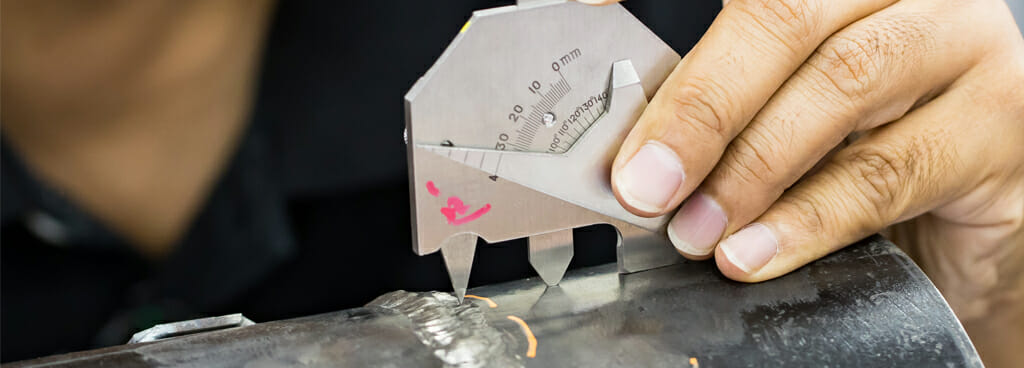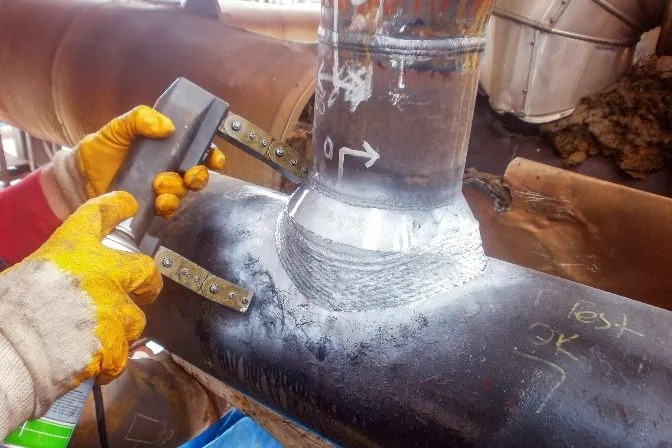Checking Out the Principles of Welding Evaluation: An In-depth Exam of Processes, Tools, and the Value of Quality Assurance in Welding Industries
Welding evaluation serves as a keystone in the upkeep of safety and structural honesty across different sectors. Recognizing the implications of these methods raises important concerns regarding their effectiveness and the future direction of high quality guarantee in welding.
Relevance of Welding Assessment
Welding assessment plays an essential role in making certain the stability and safety of welded frameworks. It functions as a systematic strategy to examining weld top quality, determining prospective problems, and ensuring compliance with established standards and specifications. The relevance of welding assessment extends beyond mere adherence to guidelines; it is critical in securing human lives and protecting financial investments in infrastructure.
Faulty welds can result in tragic failings, leading to substantial economic losses, injury, or loss of life. Extensive examination processes are necessary to identify issues such as poor penetration, porosity, or cracks before they rise right into important failings. Furthermore, efficient welding assessment contributes to the general performance and longevity of frameworks, guaranteeing that they can hold up against the conditions for which they were designed.
In addition, the application of welding inspection cultivates a society of top quality and responsibility within the welding sector. By prioritizing assessment, organizations show their commitment to quality, therefore enhancing their track record and competitiveness in the marketplace. Inevitably, welding examination is not simply a procedural action but a fundamental component of engineering integrity and security assurance, important for the effective implementation of welding jobs throughout different sectors.
Key Assessment Processes
A comprehensive approach to welding evaluation entails several crucial procedures that are essential for ensuring weld quality and architectural stability. The first crucial process is aesthetic evaluation, which allows inspectors to identify surface area issues such as fractures, porosity, and inappropriate grain look. This technique works as a preliminary examination to make certain that the weld satisfies defined requirements.

Additionally, harmful screening may be done on sample welds to evaluate their mechanical homes and performance under tension. This process involves impact, fatigue, and tensile screening to verify that the weld can stand up to functional problems.
Last but not least, documentation and coverage are critical parts of the evaluation process. Keeping exact records of inspections, observations, and examination results helps make sure conformity with market requirements and promotes regular enhancement in welding practices. Collectively, these key processes create the foundation of reliable welding assessment and quality control.
Devices for Weld Evaluation
Many devices are essential for reliable weld examination, each designed to assess different elements of weld quality and efficiency. Amongst one of the most widely made use of are aesthetic assessment devices, consisting of magnifying glasses and borescopes, which allow inspectors to identify surface area flaws such as cracks, porosity, and incorrect fusion.
In addition, ultrasonic screening (UT) tools is essential for identifying internal imperfections. This device uses high-frequency acoustic waves to reveal interruptions within the weld, ensuring the integrity of the product. Radiographic testing (RT) devices, which utilize X-rays or gamma rays, likewise offer understanding into the internal structure of welds, enabling the recognition of spaces or incorporations.
For specific reference dimensions, calipers and evaluates play a significant role in identifying weld measurements and making certain adherence to defined tolerances. Solidity testers examine the mechanical residential or commercial properties of the weld, ensuring it fulfills efficiency requirements.

Techniques for Analyzing Quality
Exactly how can the top quality of welds be reliably evaluated? A variety of methods are used to evaluate weld integrity and make certain adherence to specified standards.
Ultrasonic screening (UT) is an additional popular technique that utilizes high-frequency acoustic waves to discover interior defects within the weld. Houston Welding Inspection. This her explanation technique supplies a detailed view of the weld's integrity without endangering its structural honesty. On top of that, radiographic testing (RT) utilizes X-rays or gamma rays to expose inner problems, providing comprehensive understandings into weld top quality
Magnetic fragment screening (MT) works for spotting surface and near-surface discontinuities in ferromagnetic products, utilizing magnetic areas and colored bits to highlight defects. Dye penetrant screening (PT) can be utilized to reveal surface-breaking problems by applying a dye that seeps into cracks and is ultimately exposed.
Compliance With Market Requirements
Conformity with industry requirements is important for guaranteeing the high quality and security of welded frameworks. These requirements, developed by organizations such as the American Welding Society (AWS) and the American National Specification Institute (ANSI), offer guidelines that govern the welding procedure, products, visit and inspection procedures. Abiding by these standards not just makes certain the architectural integrity of welds yet also mitigates threats related to failings that can bring about disastrous repercussions.

Welding assessors are entrusted with verifying compliance with these standards throughout the welding procedure (Houston Welding Inspection). This entails analyzing welding treatments, keeping an eye on welder certifications, and carrying out extensive evaluations of the end product. Non-compliance can cause considerable monetary consequences, job hold-ups, and damage to a business's track record
Normal training and updates on requirements are essential to maintain personnel educated and skilled, guaranteeing that all aspects of welding procedures satisfy or exceed governing requirements. Inevitably, commitment to sector criteria offers as a foundation for excellence in the welding market, advertising security and reliability in welded frameworks.

Final Thought
In final thought, welding evaluation serves as a crucial element in keeping the security and integrity of welded structures. Adherence to market criteria makes sure conformity and advertises a culture of high quality within the welding sector.
In addition, the implementation of welding examination fosters a culture of high quality and responsibility within the welding industry. Eventually, welding examination is not merely a step-by-step step however a basic component of engineering integrity and safety and security assurance, crucial for the successful implementation of welding projects across different fields.
A comprehensive technique to welding assessment entails a number of crucial processes that are necessary for making sure weld top quality and architectural integrity. These criteria, established by organizations such as the American Welding Society (AWS) and the American National Criteria Institute (ANSI), offer guidelines that control the welding process, materials, and examination methods.Welding inspectors are entrusted with verifying conformity with these standards throughout the welding process.